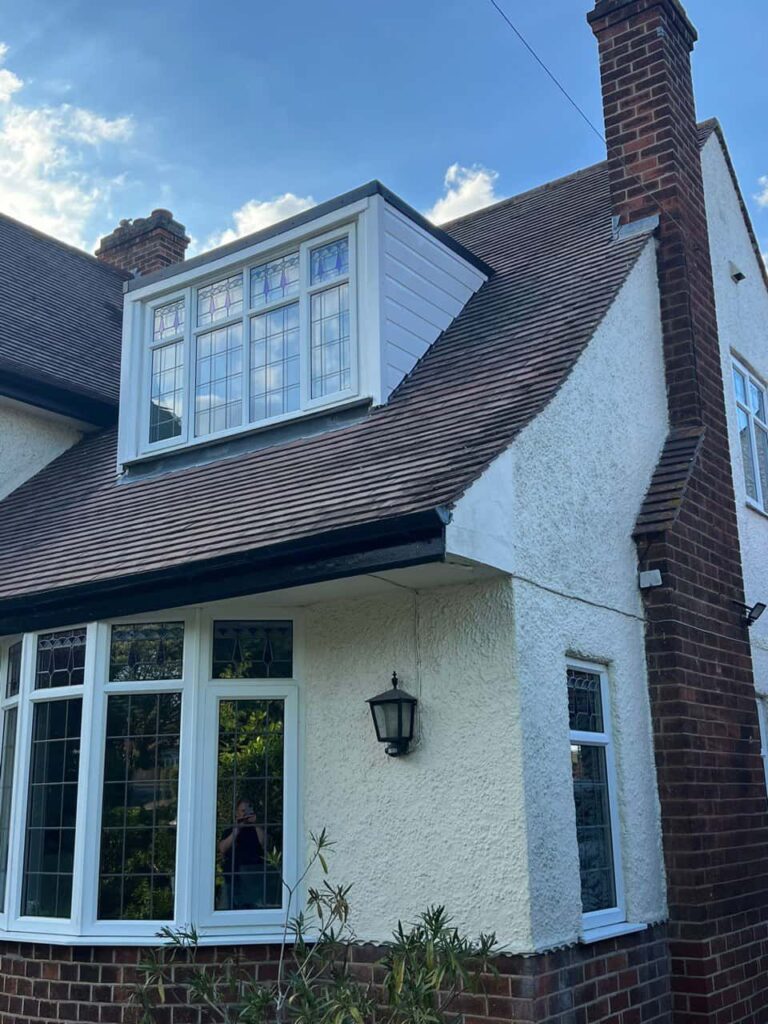Lead flashing is one of the most important, yet often overlooked, components of any roof. Its role is to create a watertight seal between roof joints, chimneys, walls, and other vulnerable points — protecting your home from leaks and weather damage. When flashing becomes cracked or loose, however, it can quickly lead to costly structural problems if not addressed early.
At Ely Roofing Repairs, we regularly help property owners in Ely and across Cambridgeshire identify and repair damaged lead flashing before it develops into a major roofing issue. Understanding the signs of cracked flashing and the importance of prompt attention can save you from extensive water damage and unnecessary disruption.
What Is Lead Flashing and Why Is It Important?
Lead flashing is a flexible, weatherproof material that prevents water from penetrating the joins between different roof surfaces. It is commonly used around:
- Chimneys and flue bases
- Roof valleys and junctions
- Skylights and dormer windows
- Where the roof meets a wall or parapet
Its purpose is to channel rainwater safely away from areas where leaks are most likely to occur. Lead remains one of the best materials for this job because of its durability and malleability — it can be shaped precisely to fit around awkward roof angles and still provide an excellent seal.
However, over time, even high-quality lead flashing can deteriorate if exposed to harsh weather conditions or if it was installed incorrectly.
Common Causes of Cracked Lead Flashing
Cracked flashing is not always caused by age alone. A range of environmental and structural factors can accelerate its deterioration.
1. Thermal Expansion and Contraction
Lead naturally expands and contracts with changes in temperature. Over time, this movement can cause stress fractures, especially if the flashing hasn’t been fitted with expansion joints to accommodate these shifts.
2. Weather Exposure
Constant exposure to rain, frost, and UV radiation from the sun weakens flashing over time. Freezing and thawing cycles can lead to cracks forming as moisture seeps into small gaps and expands.
3. Movement in the Roof Structure
If the roof settles, shifts, or experiences vibration (from wind or structural changes), the rigid connection between the flashing and the masonry can crack.
4. Poor Installation or Maintenance
Improperly installed lead flashing — for example, flashing that’s too thin or inadequately fixed — is far more likely to fail prematurely. Similarly, lack of maintenance can allow small cracks or lifted edges to worsen unnoticed.
At Ely Roofing Repairs, we see these issues regularly on older properties in Ely and the surrounding villages. Regular inspections are the best defence against these avoidable problems.
How to Spot Cracked or Damaged Flashing Early
Early detection is key to preventing water ingress and costly structural damage. Keep an eye out for these warning signs:
- Visible cracks or splits in the lead flashing.
- Water stains appearing on interior ceilings or walls, especially around chimneys or roof junctions.
- Loose or lifted edges where flashing meets brickwork.
- White or chalky residue on the lead surface, indicating oxidation or corrosion.
- Moss growth or debris trapped around flashing areas, which can retain moisture and cause decay.
If any of these symptoms are visible, it’s best to have a professional assessment from Ely Roofing Repairs to determine whether the flashing can be repaired or if replacement is needed.
Why Quick Detection Matters
Cracked flashing might seem like a small problem at first, but even a minor gap can allow significant amounts of water to enter your roofing system. The longer it’s left unchecked, the more extensive the damage becomes.
Unchecked leaks can cause:
- Damp insulation and rot in roof timbers.
- Mould growth on interior walls and ceilings.
- Weakened mortar around chimneys and walls.
- Damage to ceilings, plasterwork, and electrics.
A simple repair today can prevent widespread structural damage tomorrow. That’s why Ely Roofing Repairs always recommends regular roof inspections — especially after periods of heavy rain or strong winds.
Professional Solutions for Cracked Lead Flashing
Repairing or replacing lead flashing correctly requires skill, precision, and the right materials. The process typically involves:
- Inspection and assessment to determine the extent of the damage.
- Cleaning and preparation of the surrounding area to ensure proper adhesion.
- Re-dressing or patching small cracks using specialist lead sealants or welding techniques.
- Full replacement of flashing where cracks or corrosion are too extensive for repair.
- Ensuring correct jointing and overlaps to allow for future expansion and contraction.
At Ely Roofing Repairs, our experienced roofers use time-tested methods and quality materials to ensure a durable and watertight finish that blends seamlessly with your existing roof structure.
Preventing Future Flashing Problems
Once repaired, there are steps homeowners can take to maintain flashing in excellent condition:
- Schedule annual roof inspections to detect early signs of wear.
- Keep gutters and valleys clear of debris to prevent water pooling near flashing.
- Avoid walking directly on lead flashing to prevent denting or cracking.
- Ensure proper roof ventilation to manage moisture and reduce condensation beneath the roof surface.
Consistent maintenance and monitoring help extend the life of lead flashing and the roof as a whole.
Conclusion
Cracked lead flashing may appear minor, but it’s one of the most common causes of water ingress and hidden roof damage. Acting quickly at the first sign of deterioration can save you from costly repairs and protect your property for years to come.
For reliable inspections, repairs, and replacements, Ely Roofing Repairs provides professional roofing solutions tailored to homes and properties across Ely and Cambridgeshire. By addressing lead flashing issues promptly, you’ll ensure your roof remains watertight, structurally sound, and ready to withstand the British weather all year round.
Call us on: 01353 881 098
Click here to find out more about Ely Roofing Repairs
Click here to complete our contact form and see how we can help with your roofing needs.

